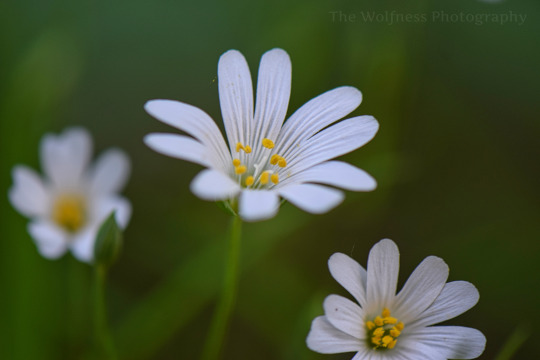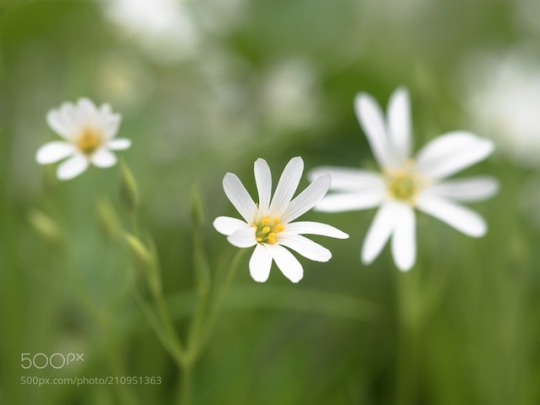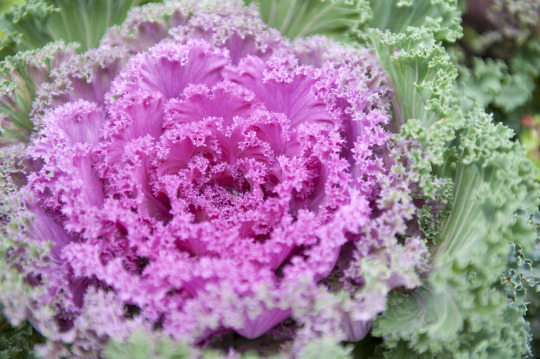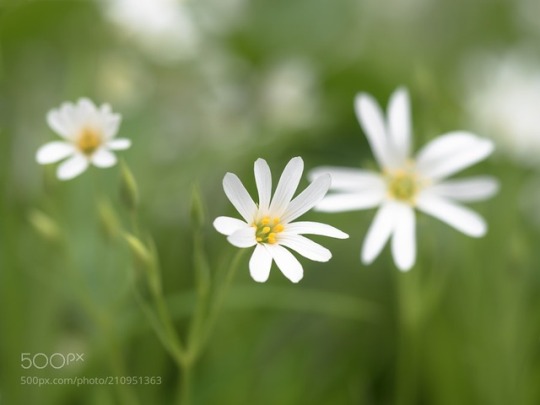#greater starwort
Text

Rabelera holostea (greater stitchwort)
#nature#nature photography#macro#macro photography#nature macro#up close#up close photography#close up#close up photography#flower#flower photography#flowers#flowers photography#Rabelera holostea#Rabelera#greater stitchwort#greater starwort#addersmeat#Spring#spring flowers#photographer on tumblr#Lithuania#Lietuva#original photography#original photographers#original photography on tumblr#original photography blog#photography
114 notes
·
View notes
Text

Saturn Correspondences
From Christian Astrology by William Lilly
(It is mostly word for word. I tried to format it to fit into a nice correspondence list, but the information itself is untouched.)
Zodiac: His houses are Capricorn as his Night-house, and Aquarius as his Day-house. Exalted in Libra, Fall in Aries, and Rules Aquarius.
Nature: Diurnal Planet, Cold and Dry and moist Vapors, Melancholic, Earthly, Masculine, the greater Infortune, author of Solitariness, Malevolent
Profession: Curriers, Night-farmers, Miners under ground, Tinners, Potters, Broom-men, Plumbers, Brick-makers, Malsters, Chimney-sweepers, Sextons of Churches, Bearers of dead corpses, Scavengers, Hostlers, Colliers, Carters, Gardeners, Ditchers, Chandlers, Dyers of black Cloth, a Herdsman, Shepherd or Cow-keeper.
Sicknesses: All Impediments in the right Ear, Teeth, all quartan Agues proceeding of cold, dry and melancholy Distempers, Leprosies, Rheumes, Consumption, black Jaundice, Palsies, Tremblings, vain Fears, Fantasies, Dropsy, the Hand and Foot-gout, Apoplexies, Dog-hunger, too much flux of the Hemorrhoids, Ruptures if in Scorpio or Leo, in any ill aspect with Venus.
Savors: Sour, Bitter, Sharp
Herbs: Bearsfoot, Starwort, Wolf-bane, Hemlock, Fern, Hellebore the white and black, Henbane, Ceterach or Finger-fern, Clotbur or Burdock, Parsnip, Dragon, Pulse, Vervain, Mandrake, Poppy, Moss, Nightshade, Bythwind, Angelica, Sage, Box, Tutsan, Orage or golden Herb, Spinach, Shepherd's Purse, Cumin, Horsetail, Fumitory
Plants & Trees: Tamarisk, Savine, Senna, Capers, Rue or Herbgrace, Polypody, Willow or Sallow Tree, Yew-tree, Cypress tree, Hemp, Pine-tree
Beasts: The Ass, Cat, Hare, Mouse, Mole, Elephant, Bear, Dog, Wolf, Basilisk, Crocodile, Scorpion, Toad, Serpent, Adder, Hog, all manner of creeping Creatures breeding of putrefaction, either in the Earth, Water or Ruins of House.
Fishes: The Eel, Tortoise, Shell-fishes
Birds, etc: The Bat or Blude-black, Crow, Lapwing, Owl, Gnat, Crane, Peacock, Grasshopper, Thrush, Blackbird, Ostrich, Cuckoo
Places: Deserts, Woods, obscure Valleys, Caves, Dens, Holes, Mountains, or where men have been burried, Churchyards, etc. Ruined Buildings, Coal-mines, Sinks, Dirty or Stinking Muddy Places, Wells and Houses of Offices
Minerals: Lead, Loadstone, the Dross of all Metals, as also the Dust and Rubbish of everything.
Stones: Sapphire, Lapis Lazuli, all black, ugly Country Stones not polishable, and of a sad ashy or black color.
Weather: Cloudy, Dark, obscure Air, cold and hurtful, thick, black and cadense Clouds: but of this more particularly in a Treatise by itself.
Winds: Eastern Winds
Angel: Cassiel
Planetary Alliances: Works well with Jupiter, the Sun, and Mercury. Does not work well with Mars and Venus.
Week day: Saturday

Correspondence posts for the other planets: [Sun] [Moon] [Mercury] [Venus] [Mars] [Jupiter]

#astrology#planets#saturn#planetary#planetary magic#correspondences#magic#witchcraft#witchblr#astrology witch#magical correspondences#witches#witch community#witch#astro community#zodiac#zodiac signs#astroblr#astrology facts
5 notes
·
View notes
Text
Mets-tähthein (Rabelera holostea, varem Stellaria)

Saksa keeles Große või Echte Sternmiere, inglise keeles greater stitchwort või starwort, või addersmeat.
Mitmeaastaline, kaheiduleheline roht- ja õietaim tähtheina perekonnast, mis on osa nelgiliste sugukonnast ja nelgilaadsete seltsist.
Kasvab 10 kuni 40 cm kõrguseks kuuse-segametsades, puisniitudel ja põõsastikes. Õied 2-3 cm laiused. Viis valged kroonlehte, keskpaigani lõhenenud.
Pilt: Agnieszka Kwiecień (Nova), CC BY-SA 3.0, Wikimedia Commonsi kaudu
#taim#rohttaim#katteseemnetaim#õistaim#kaheiduleheline#nelgilaadne#nelgiline#tähthein#asja ja asemenimega taim#metstaim#1. õppehoog#vikipeedia pilt
2 notes
·
View notes
Photo

Another common woodland wildflower in the UK and across temperate regions of Europe: Rabelera holostea, commonly called greater stitchwort, adder’s meat or poor man’s buttonhole. This plant is very interesting because it is the only member of the genus Rabelera. It was formerly considered a member of Stellaria (the genus of starworts and chickweeds). It uses an explosive seed dispersal method, which is audible and can be startling!
According to the Woodland Trust, it was believed it could be used to cure side stitches when exercising. The Woodland Trust also says, “Some say that if you pick greater stitchwort, you will cause a thunderstorm. In Cornwall it was believed that greater stitchwort was the property of the pixies, and picking it would anger them – often resulting in said pixies enchanting you.” I’m glad I didn’t pick any! It had very weak stems that are easy to snap, though - I guess those pixies really are tricky.
37 notes
·
View notes
Text
Flora, Fauna, and Environment of Neldoreth (Updated and Added To)
,Flora, fauna, environment/geography of Arda
I did Region here!
Originally requested by @actuallyfingolfin
I did try to organize these more into sections of the forest (openings and glades, margins and edges, moist or shaded soil, etc) and I don’t know if it will be of interest to anyone else but if anyone is interested in sending me a section of a habitat or location for me to elaborate on I will. Or a season!
I put a lot of work into this!
Neldoreth is a forest of beech trees, part of Northern Doriath and contained within Melian’s Girdle. It was here that Lúthien was born and later imprisoned to prevent her from rescuing Beren. It was bordered by the River Esgalduin on the South towards the Northeast and and River Mindeb on the West, both tributaries to Sirion. The tallest beech tree in the forest was Hírilorn and it was here that Lúthien was imprisoned.
Doriath has three forests making up its kingdom; Neldoreth, Nivrim, a small forest of mostly oak trees West of Sirion and Region, in Southern Doriath, a forest of mostly holly where Menengroth was located.
I’ve been thinking a lot about potential biomes ecoregions for Beleriand and the other realms. Ecoregions are patterns of ecologically and geographically defined regions. A comparable biome are temperate broadleaf and mixed forests with English lowlands beech forests being a potential ecoregion.
I also have specific headcanons mentioned here about far Eastern Doriath closer to the river Celon which I will talk about when I do far Eastern Doriath and the lands North of Iant Iaur. These are closer to North Atlantic moist forests and even humid mixed forests.
Neldoreth is a lush, deciduous forest with moderate to heavy rainfall depending on the season. Snowfall is rare.
There are a number of genuses directly referenced in canon in relation to Neldoreth; beech, chestnuts, oak, elm, hemlock, species of fern, grasses, the flower Niphredel which was a creation of Tolkien himself but inspired by snowdrops (though having more petals creating a star like flower) and the white field rose.
The beech trees were likely a combination of European, Chinese and Japanese blue beech and dwarf beech with other trees dotting the boundaries and occasionally mixing with the beeches in groves throughout Neldoreth. These include common ash, common hornbeam, sycamore, sessile oak, common oak, fluttering elm and horse chestnuts.
The forest floor is covered in ferns such as alpine lady fern, bracken, hay scented fern, hard fern, hart tongue fern and mountain wood fern as well as common aloe moss, bog groove moss, red bog moss and more . There are also grassy groves and openings such as those mentioned in the Lay of Leithian. It is possible these were created through the magic of Melian. Woodland opening and transitional habitats are particularly interesting to me. Woodreeds are one possible example.
Spindle, nettle leaved bellflower, bitter vetch, grow on the Western edges of the forest South of Mindeb
Bluebells,, wood anemone, primrose, dog’s mercury, yellow archangle, snow drops, yellow wood violet, wood sorrel, greater starwort, and enchanter’s nightshade are a small selection of flowering plants.
As I said, send a section of the forest or a season and I can go into more detail!
Large bitter cress, water aven, flag lilies, purple marshlocks, common stinging nettles wild parsnip, wild thyme, marsh ragwort and brooklime (among many others, see below) grow in abundance by the banks of Esgalduin and smaller tributary streams.
Barnacle and beard lichens, script lichen, beechwood sickener, earthstar, common bird’s nest fungus, inkcap, fly agaric, yellow brain and velvet shank are a selection of the fungi and lichens that can be found in Neldoreth.
As a number of butterflies feed upon beeches and the other trees common to Neldoreth, Neldoreth is home to a variety of butterflies and moths. Large and light emeralds, winter moths, purple shot copper, cherry bark moth, mourning cloak, wood white, large tortoiseshell, wall brown olive skipper, common blue as well as gothic, ghost, silver ground carpet, dot and poison hemlock moths
There are also a variety of beetles, bees, and praying mantis like insects. (Insect species are so numerous it’s hard to given even a small sample but I’m always happy to make specific posts about insects or any other category of a place)
Bumblebees including tree bumblebees, pollen beetles such as in the genus Meligethes, violet click beetles, oak and speckled bush crickets, rose chafer, hawthorn shieldbug, and biolumenescent fungus gnats (I talked in my post about Western Beleriand about this but while biolumenescnese is more common elsewhere in Beleriand, there are a few biolumenescent species in Menengroth and the woods of Doriath.
Lemon slugs and white lipped snail can also be found and I was talking with @tol-himling about the possibility of stranger species of gastropod being possibly brought over or arriving with Melian.
Birds live by the banks of Esgalduin and throughout the woods itself. White throated dipper, garden and willow warblers, song thrush, common nightingale, nuthatch, gray headed woodpecker, white backed woodpecker, black woodpecker, little bunting, indigo bunting, song sparrow, wood duck and shovelers being some examples.
I also headcanon that there are prehistoric (from today’s perspective) species of birds including small, brightly colored flightless birds that nest in the ferns and glades of the forest.
Palmate newts, great crested newts, agile frogs, moor frogs and small tree frogs are found in vernal streams branching from Esgalduin and Mindeb with agile frogs and dark gray and green toads living away from the water in undergrowth for much of the year.
Neldoreth doesn’t have many larger mammals but there are Chital, water deer and barking deer like species, stoats and lesser weasels, reed vole, water shrews, bush dogs, hedgehogs (mostly European but others too), and flying squirrels (among others)
Dormice especially hazel dormice and grass snake (obviously these are different kinds of animals but I grouped them together because of their habitat) on the margins and towards the river.
I do think in other places of Doriath there are giant elk that do occasionally travel through Neldoreth. There are other species that do not exist today, I mentioned tapir like creatures as well as saber toothed cats (though these are found mostly to the wild and dangerous North of Neldoreth, North of Iant Iaur) and other stranger creatures (I’d be happy to share some headcanons on non existent species or more speculative ecology if anyone wants!)
Esgalduin, the river that runs through Doriath dividing Neldoreth from Region, North to South, is an ecosystem and habitat in itself. If there’s interest I’d love to do a post specifically about it so I don’t over condense here?
But there are a variety of aquatic plants, fish and other creatures there.
As always, requests and asks are open and welcome!
34 notes
·
View notes
Photo

White Woods by ChristinaObermaier
#spring#macro#flower#wood#makro#greater stitchwort#chickweed#Echte Sternmiere#Easter-bell starwort#St
1 note
·
View note
Text
How to Care Aster Blossom
Asters are delightful perennials that are discovered wild in North America and southern Europe. The variety Aster incorporates somewhere in the range of 600 types of generally disseminated blossoming plants in the family Asteraceae.

Asters are likewise called as Starworts, Michaelmas Daisies, or Frost Flowers. Asters are found predominantly in North America, with certain species stretching out into South America; others are conveyed all through Europe and Asia. The word Aster is of Greek induction and alludes to the Starlike blossoms that can be white, red, pink, purple, lavender and blue, for the most part with yellow focuses.
www.flowersdelivereduk.org.uk
The class Aster is presently commonly limited to the old world species, with Aster amellus being the sort types of the variety (and of the family Asteraceae). The new world species have now been renamed in the genera Almutaster, Canadanthus, Doellingeria, Eucephalus, Eurybia, Ionactis, Oligoneuron, Oreostemma, Sericocarpus and Symphyotrichum, yet at the same time the new world species are likewise broadly alluded to as Asters in the green exchange.
Asters are really 1 - 1.5 - inch blossoms. Asters are extremely convoluted blooms. An Aster bloom is really an accumulation of exceptionally little cylindrical blossoms, assembled together in a focal plate, and encompassed by supposed beam blossoms or petals, eg., Sunflower. The focal circle of blooms on the Asters is encompassed by the ring of beam blossoms. By and large the circle blossoms are an unexpected shading in comparison to the petals so the whole bloom head resembles a solitary bloom with a focal plate encompassed by contrastingly hued petals. The beam blooms on the Asters are never yellow. The cylindrical blossoms of the Asters are indiscriminate, having both a pistil and stamens; the beam blooms are generally sterile.
Some well known assortments of Asters are: Lindley's (Aster ciliolatus), New England (Aster novae-angliae), Many-Flowered (Aster ericoides), Western Silvery (Aster sericeus), Willow (Aster hesperius), Flat-Topped White (Aster umbellatus), Smooth (Aster laevis).
Realities About Asters
Aster plants are for the most part coarse-developing, verdant stemmed plants that are at times marginally woody at the base.
The greater part of the Asters are perennials, however a couple are annuals and biennials.
All Asters have interchange, basic leaves that are untoothed or toothed yet once in a while lobed.
The leaves of the Aster plant are regularly dull green and, similar to the bloom petals, can likewise be long, slim and pointed.
Asters for the most part blossom in pre-fall and fall, yet Alpine asters (Aster alpinus) bloom in May and June.
The two primary gatherings of Asters are New England Asters (Aster novae anglias) and New York Asters (Aster nova belgii).
Asters are one of the simplest greenery enclosure perennials to develop.
Asters' most serious issue is fine buildup. Asters might be spread by partitioning or developed from seed sown inside at around 70 degrees F or might be sown straightforwardly into the patio nursery after all threat of ice has passed. Germination takes somewhere in the range of 15 to 30 days, contingent upon the temperature.
Asters ought to be planted in soggy all around depleted soil in full sun, yet they will endure light shading.
Plant Asters something like 18 inches separated with the goal that plants don't frame expansive rugged bunches.
Develop clusters ought to be partitioned each 3 - 4 years in the late-winter, or pre-winter after the blooming has wrapped up.
Squeeze back the tops by 6-8 creeps in any event once amid the late spring, to make a bushier plant and to draw out the fall sprout.
Squeezing must be done before mid July, or it will have a contrary impact, and blossoming will be decreased.
Asters Plant Care
By planting Asters in a bright spot with great air flow, fine mold can more often than not be kept away from.
Asters need customary watering at their underlying foundations.
Numerous Aster assortments neglect to endure the winter whenever kept excessively clammy.
Asters ought to be chopped down subsequent to blossoming to stop seeding. Indeed, even without seeding, Asters ought to be isolated at regular intervals to remain taking care of business.
Infection in Asters can be constrained by separating them yearly in spring.
Pruning will in general postpone blooming by just a couple of days however creates an a lot prettier plant.
Asters are utilized as sustenance plants by the hatchlings of various Lepidoptera species.
Asters are generally an ideal objective for feathered creatures, honey bees and butterflies since they are fragrant and vivid.
Numerous types of Asters are dry season safe.
Asters rely upon creepy crawlies to fertilize them. A few creepy crawlies that take dust starting with one plant then onto the next incorporate honey bees, butterflies, and flies.
The seeds of Bushy Asters are little achenes, and look like parachutes, which normally spread by wind.
The China Aster (Callistephus cinensis), likewise a Compositae, a local of China, is identified with the genuine Asters.
0 notes
Photo

White Woods by ChristinaObermaier http://ift.tt/2pbLDOG #macro
#spring#macro#flower#wood#makro#greater stitchwort#chickweed#Echte Sternmiere#Easter-bell starwort#St
0 notes
Text
Marl Pools: Tools In Conservation
After a recent dawn train ride from Crewe to Manchester through the fororn winter farmland of Cheshire, I was reminded of a feature of the land here referred to as marl pools. On my journey, I could see many such pools dotted about in the landscape, making an obstinate pain for farmers, reducing the productivity of their fields, but providing ample opportunity for wildlife to eek out a living and improve the biodiversity and attraction of an otherwise intensively managed mixed agricultural lowland. Cheshire has more ponds than any other county, on acount of its geology, flat aspect, and agricultural history.

The Marl ponds of the Cheshire plains were formed during the retreat of the glacial ice sheet 10,000 years ago. Large chunks of ice would break off and leave permanent water filled pock marks in the ground. Such ponds are sometimes called kelle ponds. Some such ponds would be formed by the action of eccentric boulders and stones, sometimes carried many miles from their origin. The deposition of such eccentric boulders is well illustrated at Manchester University, where in the main quadrangle sits a 20-ton, 15ft-wide boulder which had travelled under a glacier from the Lake District and ended up in the centre of Manchester in Oxford Road. It was discovered at the end of the 19th century and, now housed for all to see, stands tesimony to the action of geological forces in the landscape.
But it is not just geology that has had a say in the evolution of marl pools. Humans have also extended some influence in their formation and maintenance. Marl is a clay-like substance rich in lime; its calcareous nature is due to the crushed shells it contains. The glacial ice sheet originally carried the marls here during the last Ice Age, scoured from the ancient sea floor. Marl ponds contain calcium carbonate leached up to ground level from underlyng marl-rich bedrock. The presence of deep puck marks in the land allowed lime- rich marl to leach upwards and line the sides of the pools where it has since ancient times been used as a fertiliser (indeed neutraliser) for acidic soils. This was called 'sweetening' the soil.

Although the Celts were known to use marl from ponds in this way, it wasn't until the 1800's that using marl to make lime powder became widespread. Indeed, the majority of marl pools are flooded marl pits, mined by gangs of itinerant contractors. If a marl pool has a small size and regular shape, with three steep and one shallow side, it was probably a marl pit. Whilst the three steep sides were used to extract marl, the shallow side would be used as an access ramp. Marl mining was seasonal and usually it was performed in August when the water table was very low. Some ponds, either of geological or mining origin, are known as vernal (or spring) ponds since they are supplied by runoff water and are seasonal in nature. Marl pits are especially common along the Sandstone Trail on the low-lying, heavier, clayey soils between Utkinton and Beeston.
The presence of ponds and small water bodies in the landscape can prove highly benefcial for biodiversity. According to the Cheshire Wildlife Trust, the vegetation in ponds varies according to depth. Plants like spiked water-milfoil, water-starwort and yellow water-lily are typical of deeper water; while soft rush, creeping bent, greater pond sedge and yellow iris are more characteristic of marginal areas. Ponds are particularly good for invertebrates, including the large red damselfly, common darter and broad-bodied chaser dragonflies. Ponds provide important homes for amphibians, including the protected great crested newt, common toad, smooth newt and palmate newt. They are also home to water voles which burrow into soft banks. Ponds provide stepping stones (wildlife corridors) between isolated patches of habitat, linking up the countryside and allowing species to move about freely. At ADL, a variety of courses can allow you to study and work in this vital area of waterway conservation, and make your own mark on the landscape.
References
Parker, Alan. Northern Woodlands Online. There's Marl In Them Thar Ponds (2005). https://northernwoodlands.org/outside_story/article/theres-marl-in-them-thar-ponds
Sandstone Trail Online. Ponds and Marl Pits. https://sandstonetrail.co.uk/ponds-and-marl-pits/
Manchester Evening News Online. Our Land In The Making (2013). https://www.manchestereveningnews.co.uk/news/greater-manchester-news/our-land-in-the-making-1120010
0 notes